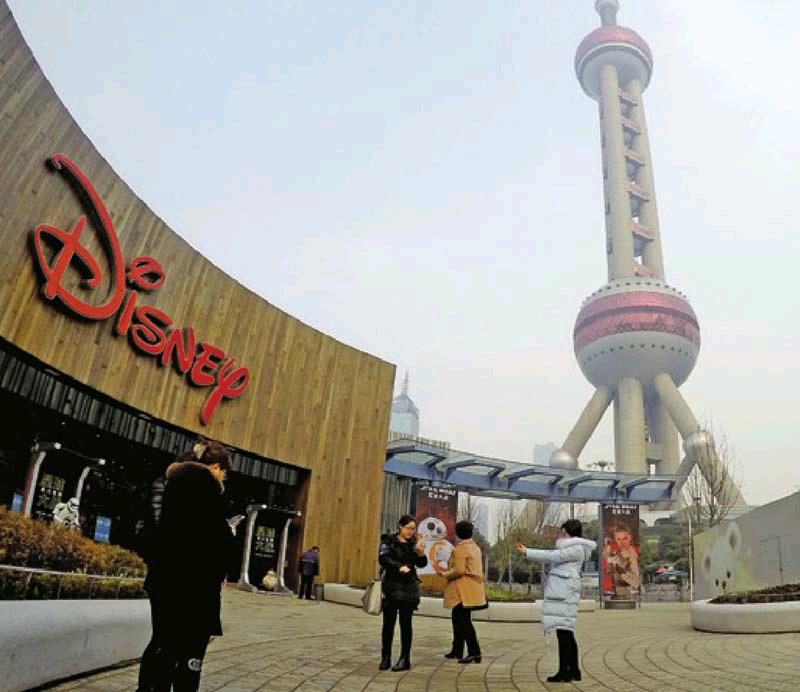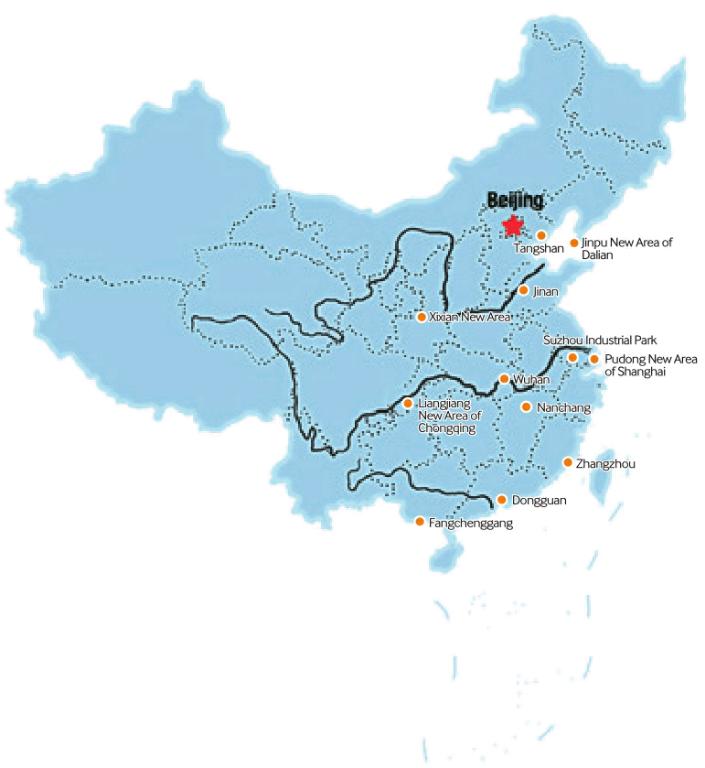Opening Up Further
2016-06-17ByJiJing
By+Ji+Jing
Following the establishment of free trade zones (FTZs), China has selected 12 cities and areas to try out a new open-economy system which is more open to foreign collaboration, Shen Danyang, spokesman of the Ministry of Commerce, announced on May 17 at a press briefing.
The overall goal of this experiment is to create new models of market-dominated resource allocation, new forms of economic management, new patterns for all round opening up and new advantages in international cooperation and competition. The experiment, scheduled to be completed in two years, is expected to accumulate experiences that can be replicated and expanded across the country.
The pilot will operate in six cities—Jinan, Nanchang, Tangshan, Zhangzhou, Dongguan, and Fangchenggang—as well as six areas including the Pudong New Area of Shanghai, the Liangjiang New Area of Chongqing, the Xixian New Area of Shaanxi Province, the Jinpu New Area of Dalian, the city cluster surrounding Wuhan, and the Suzhou Industrial Park.
In Shens view, a new open-economy sys- tem is not only about opening up, but is actually geared to reform.
A complement to FTZs
Currently, the four FTZs established in Shanghai, Tianjin, Guangdong and Fujian serve as important platforms to push forward Chinas openingup process.
So, why does China want to build pilot zones for a new open-economy system when it already has four FTZs set up?
Shen told the Economic Information Daily that the pilot zones and the FTZs are both aim-ing to experiment with a new system to bolster Chinas opening-up efforts. These experiments are set to provide the experience necessary for the results to be replicated nationwide. The two types of zones nonetheless differ in terms of function, location and size.
The FTZs, for example, are more advanced in terms of opening up because they comply with international trade and economic rules and standards by experimenting with key and sensitive opening-up issues such as the adoption of the negative-list approach. On the other hand, the new open-economy system works with cities and areas at various stages of development—unlike FTZs which are primarily located in developed areas—so as to facilitate the eventual spread of the system throughout the country.
The FTZs are focused on trade facilitation and the opening-up of the financial sector. Meanwhile, the new pilot zones are set to en- courage local governments to form a public relations and public service system for opening up, including setting up trade associations and the establishment of a management system for state-owned enterprises overseas investments.
Compared with FTZs, which are all located in coastal regions, the pilot zones are more widely dispersed. They are located both in coastal and hinterland areas and include both provincial capitals and second-tier cities. They also cover a larger area than FTZs, which cover an average area of over 100 square km, while some of the new pilot zones can exceed 10,000 square km.
As a consequence, the industries involved in the new pilot zones are also more varied, including modern agriculture, manufacturerelated services, and high-end manufacturing industry.
Bai Ming, a researcher with the Chinese Academy of International Trade and Economic Cooperation, explained that these pilot zones are being set up because its difficult to repeat the same process of high-level opening up undertaken by the FTZs throughout the country within a short period.
“The new experimental zones are more representative, as they are from a wider span of the country,” Bai said.
“The pilot zones include cities such as Dongguan—a trade processing hub, the steel industry base Tangshan, as well as the industrial park in Suzhou. The variety will enable all kinds of cities in China to find a model to follow,” Bai added.
Missions
According to Shen, this experiment will focus more on reforms related to opening up so as to form new systems and mechanisms that can adapt to an open economy. He specified the main tasks of the pilot zones:
First of all, the pilot zones are set up to observe a new model of open economic management. On one hand, the government should streamline administration—on the other hand, the role of non-governmental organizations and market entities should be given full play in order to ensure regulated and orderly economic operation and market competition. For instance, when transforming the foreign investment management system from an approval-based one to a registration-based one, how can local governments provide better services for foreign investors?
A new coordinated system for opening up among all kinds of industrial parks and demonstration zones should be formed. Nationallevel industrial parks, FTZs, and innovation demonstration zones are important platforms for opening up. However, these parks or zones urgently require upgrading and repositioning.
The experiment is designed to find new paths for international investment cooperation, including solving systematic problems in using foreign investment and carrying out overseas investments. For instance, problems such as how to attract high-end manufacturing and service industries to China and how intermediary organizations specializing in design consultation, asset evaluation, credit rating and legal services can globalize could be solved through experimentation.
A new foreign trade promotion system oriented at quality and efficiency is to be established. The focus should be to stabilize and improve foreign trade growth in order to enable China to gain an upper hand in the global industrial value chain. The system should boost both the trade of goods and services.
New ways to open up financial services are also to be explored. Focus should be placed on the globalization of financial services and the service industry in order to improve the influ- ence of Chinas financial institutions around the world. The pilot zones can copy the financial industry practices that have been carried out in the Shanghai FTZ. Meanwhile, the weaknesses of financial institutions in serving the real economy, especially the open economy—such as mid- and long-term financing for equipment manufacturing enterprises and large projects—should be remedied.
“The highlight of the tasks is to create a new pattern of all-round opening up,” said Shen. Local governments are invited to participate in national opening-up strategies so as to reinforce the overall process. For instance, they are encouraged to strengthen cooperation mechanisms with major cities of countries involved in the Belt and Road Initiative. The pilot zones can upgrade trade and economic cooperation with cities in other countries by setting up trade and economic agencies in other countries or by forging sister city relationships.
Application
Both central and local governments have a role to play in pushing for the formation of the new open-economy system.
“The Central Government should formulate policies to guide the establishment of the system, while local governments should experiment with the new open-economy system based on their own realities,” said Shen.
“China is now deeply involved in the global economic system. Therefore, great importance should be attached to the relationship between opening up and national security. The trial will cope with unpredictable risks in opening up to ensure the smooth implementation of the new open-economy system nationwide,” Shen added.
Many cities and areas involved in the new open-economy system experiment are highly anticipated candidates for the third batch of FTZs. Consequently, the question arises as to whether the approval of these pilot zones will delay the establishment of the third batch of FTZs.
Shen, however, didnt think that this would be the case. “The new open-economy system and FTZs are two separate developments,”Shen added.
However, Lu Jinyong, a professor at the University of International Business and Economics in Beijing said, “The experiment for the new open-economy system is a test of the results achieved by FTZs ahead of their nationwide application. Therefore, their establishment may indeed put off the third group of FTZs.”
